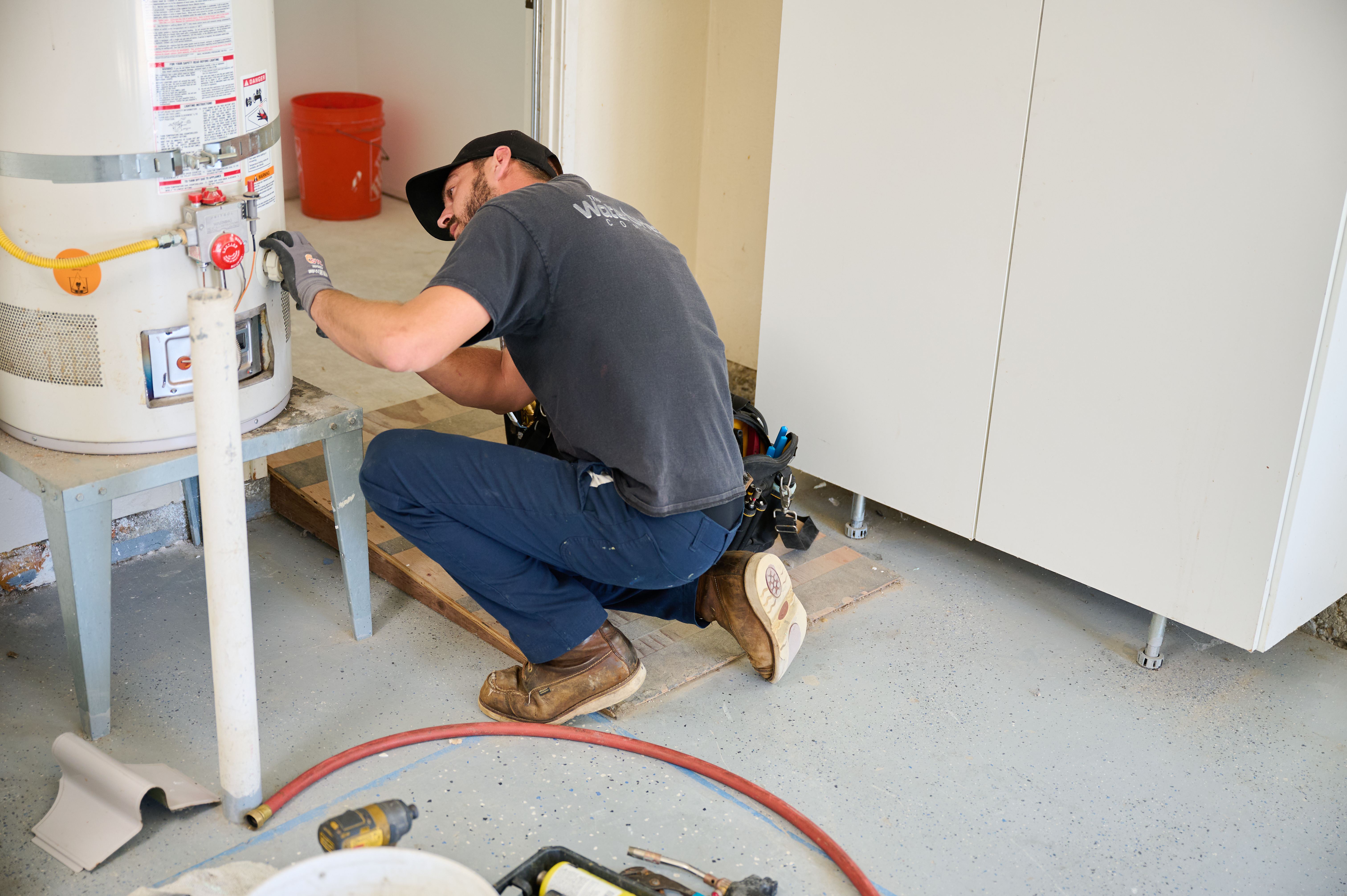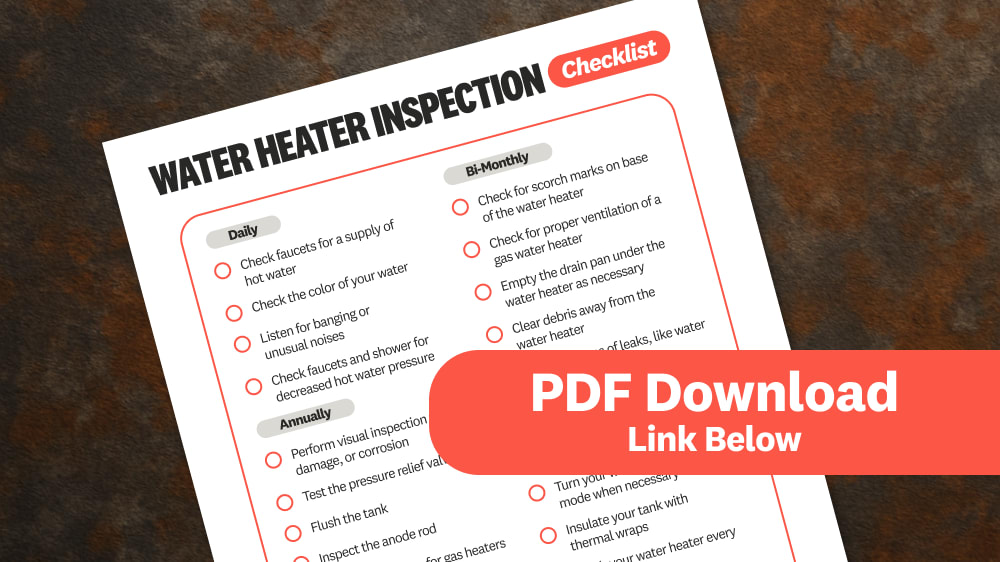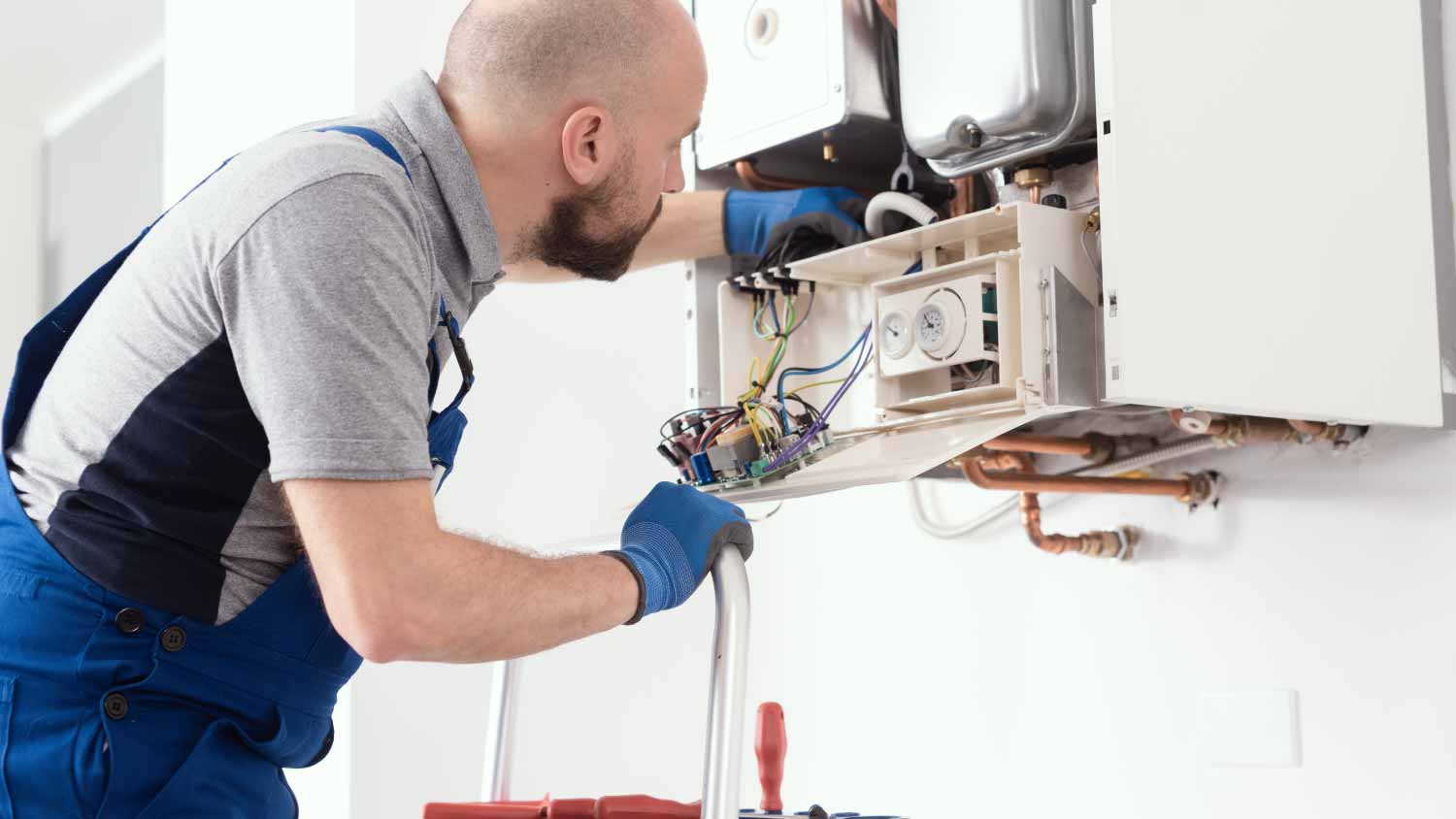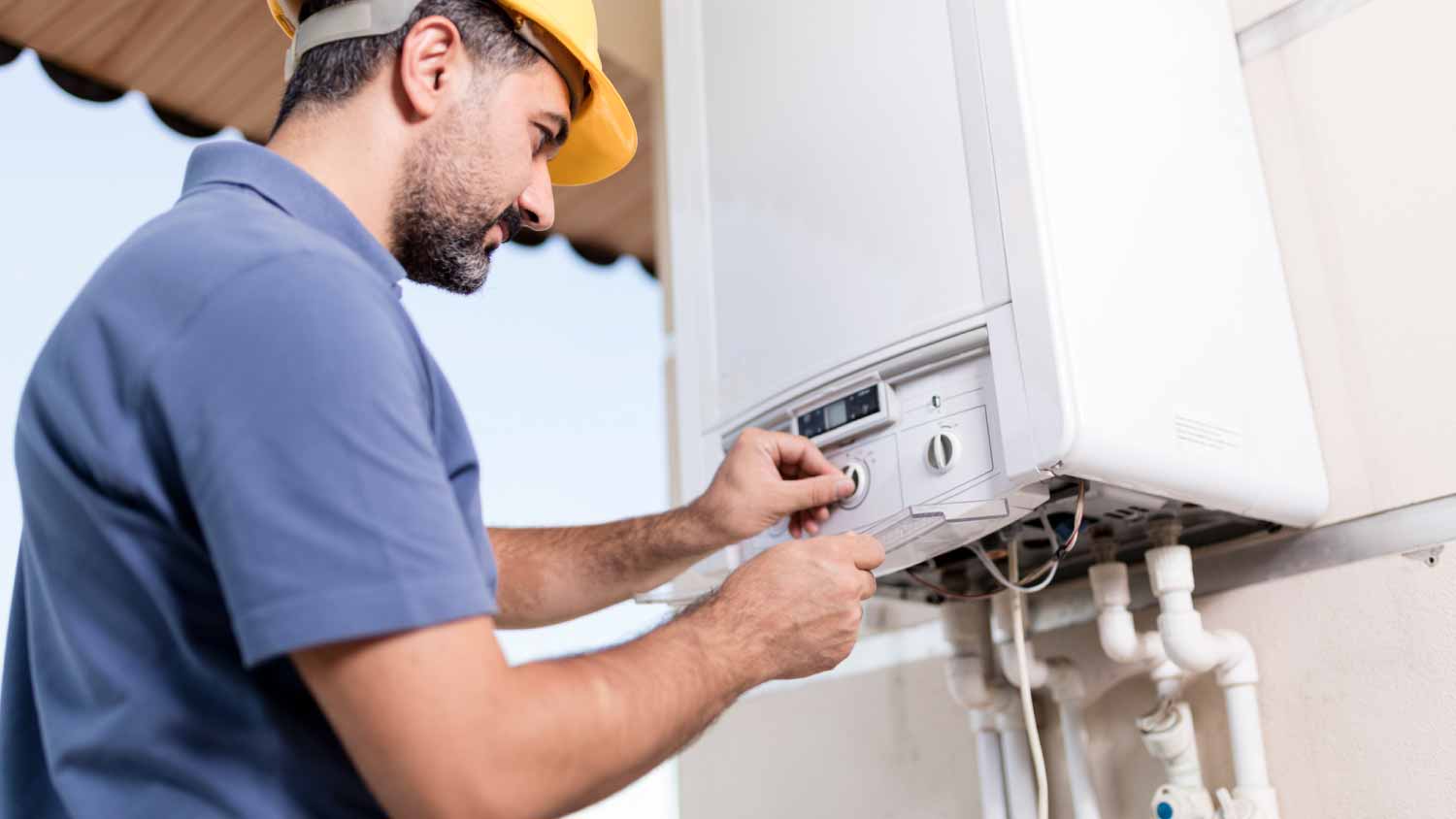
Tankless water heater costs depend on the size of your water heater, location, fuel type, and more. Keep reading to calculate your expenses.
Don’t get left in cold water—you can take steps early and often


If you’ve got hot water running, you’re likely not concerned about the water heater. After all, it works properly, so why should you worry about it? Unfortunately, that line of thinking can allow maintenance to slip by, causing your water heater to break unexpectedly. And unexpected breakdowns seem to happen at the worst times—something you don’t want to deal with.
Fortunately, inspecting your water heater can help keep it running smoothly. Luckily, there are some easy tasks that you can do yourself to give your water heater a checkup without breaking a sweat. We have a handy water heater inspection checklist that’ll guide you through what to look out for and what a professional would do during an inspection.
You should plan on inspecting your water heater every two months to avoid any major plumbing problems, such as leaks or burst pipes. However, you can do a quick inspection any time you enter the room to ensure that everything is in tip-top shape. Even more simply, you can do some of the inspection during your daily living tasks, like doing dishes or taking a shower.

Check your faucets for a supply of hot water.
Check the color of your water.
Listen for banging or unusual noises.
Check your faucets and shower for decreased hot water pressure.
Check for scorch marks on the base of the water heater.
Check for the proper ventilation of a gas water heater.
Confirm the drain pan is under the water heater and empty it if necessary.
Clear debris away from the water heater.
Check for signs of leaks, like water on the floor.
Check the water bill to see if there is a large increase in utility cost without an explanation.
To prevent carbon monoxide exposure from a water heater, make sure it is properly ventilated. You should also have it inspected and cleaned every year and install a carbon monoxide detector nearby. If you smell gas—which can mimic the scent of rotten eggs—evacuate immediately and call your gas company.

Inspecting your water heater yourself is a great way to notice the first sign of trouble, but sometimes it’s best to call in a water heater professional to take a deeper look. A pro can help diagnose any problems as they appear but can also inspect other facets of the water heater that you might not want to do yourself for safety reasons.
Your local water heater repair contractor will do the following during an inspection:
Perform visual inspection for leaks, damage, or corrosion.
Test the pressure relief valve (TPR valve).
Check for hidden leaks that are not easily visible.
Flush the tank.
Inspect the anode rod.
Check the gas line for gas heaters.
Examine the venting system for gas heaters.
Test the heating element for electric heaters.
Check water quality for proper PH levels.
During this inspection, the plumber will recommend any repairs that may be necessary or might suggest a new water heater altogether if yours is aged and starting to wear. It’s recommended to have a professional inspect your water heater once per year to ensure proper operation.
Beyond keeping up with your DIY and professional water heater inspections, there are other maintenance tips that you can use to extend the life of your water heater. Some of these will be done by your water heater pro, but if you feel up to the task, you can do these yourself to make sure you don’t run out of hot water any time soon:
Turn your water heater to vacation mode (if applicable) to allow it to run in an energy-saving mode if you’ll be away for a vacation. Likewise, you can turn down the water heater's temperature during this time.
Insulate your tank by using thermal wraps to reduce energy consumption. This will help keep the heat in the tank, causing the water to stay hot longer.
Flush your water heater every six months to clear any sediment from the bottom.
Inspect the anode rod for signs of rust or corrosion.
Check your temperature control setting; if an adjustment is made and you still don’t have hot enough water, this could indicate a sensor or regulator issue.
Taking precautions, along with inspecting your water heater for proper operation, will help keep your showers hot and your dishes clean. It’ll also help eliminate the need for a frantic call to a water heater pro when there’s no hot water.
There are many signs, both big and small, that indicate your water heater is starting to break. Noticing these signs right away is an important step in preventing the loss of hot water altogether. Some signs of common water heater problems you want to look out for include:
Tapping or knocking sounds
Lack of hot water
Temperature fluctuations
Leaks around the water heater
Odor in the water
Rust or brown-colored hot water
In addition to the above noticeable signs, you want to also be aware of your water heater’s age. If it’s older than 10 years, you’ll want to consider replacing it soon, especially if it’s showing any of the above signs. Water heaters normally last between 6 and 12 years unless they’re tankless, which can last around 20 years. When it reaches double digits, it’s not unlikely that you’ll start to have trouble with it sooner than later.
A water heater inspection is a job best handled by a water heater installation and repair pro near you. In-depth water heater inspections are not normally included in a home inspection, so instead of hiring a home inspector, you’ll want a pro who specializes in water heaters. If your water heater needs to be repaired, a water heater specialist will often be able to perform minor repairs on the spot. Water heater repair costs an average of $220 to $980, depending on the type of repair.
Your water heater inspection may reveal that it’s time for a replacement. On average, replacing a water heater costs between $880 and $1800. It’s better to plan a replacement before your current heater has a catastrophic failure so you don’t find yourself without hot water for an extended period of time.
From average costs to expert advice, get all the answers you need to get your job done.

Tankless water heater costs depend on the size of your water heater, location, fuel type, and more. Keep reading to calculate your expenses.

Wondering how much a water heater expansion tank costs? Use this cost guide to get an accurate estimate and learn how to choose the right one for your home.

While solar water heater costs are a bit higher than a standard system, this energy-saving option could pay for itself in a few years. Here’s what you need to know.

The number of people, flow rate, and water temperature in your home will help you calculate what size tankless water heater you need. This guide walks you through it.

Trying to decide between a heat pump and a tankless water heater? Take a look at the pros, cons, and costs of these energy-efficient water heaters.

A lack of hot water might not mean an expensive repair. Use this guide to learn how to replace a thermocouple on a water heater as a potential fix.